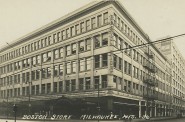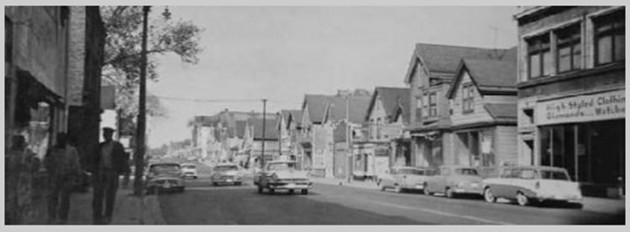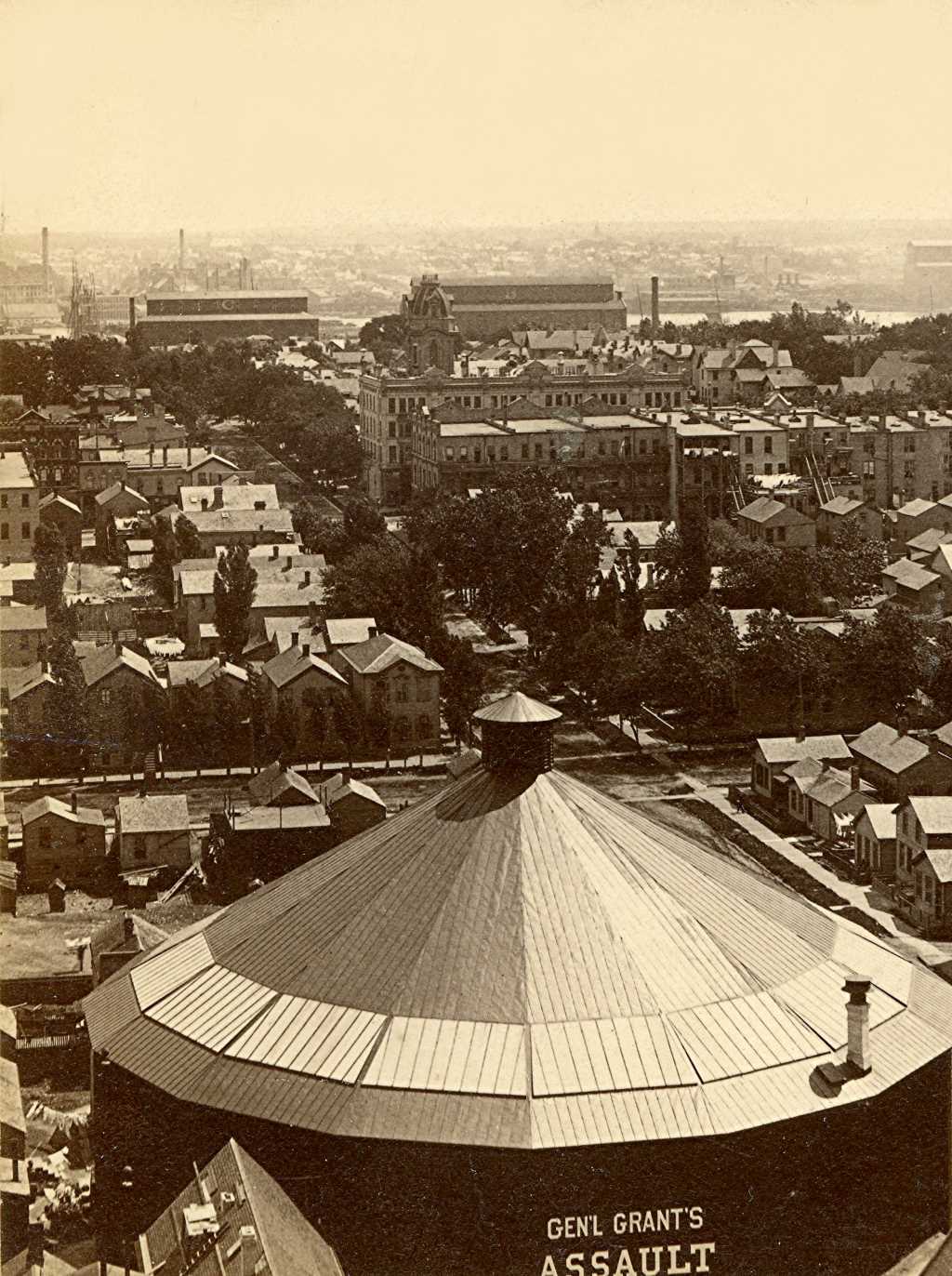Panorama of Milwaukee, 1885
The new Industrial Exposition Building gave a great vantage point for those photographing the city.
Among the stereoviews of Milwaukee done by famed photographer H.H. Bennett were sweeping cityscapes from the tops of tall buildings. For instance. He photographed views from the top of the Mitchell Bank and the County Courthouse, then located at what now is Cathedral Square Park.
The Milwaukee Industrial Exposition Building, which opened in 1881 and was located downtown, provided a new vantage point from its 175-foot-high polygonal dome. This view looks to the south and a bit west; Cedar St. (which later became Kilbourn Ave.) is the cross street. The other is 6th St. heading towards the large grain elevators in the background. You can also see the Menomonee River in the distance.
The Exposition Building itself would only last until 1905 when it was ravished by a massive fire. Nobody died from the blaze even though a large group was in the building for a card tournament playing skat.
Of special interest in this photo is the building in the foreground with the sign advertising “Gen. Grant’s Assault on Vicksburg.” A Chicago businessman, William Wehner, would bring artists here from Germany whose specialty was panorama painting. His company was the American Panorama Co. One of the company’s first productions was a panorama of the Battle of Atlanta, also called the Atlanta Cyclorama. This massive painting still exists although it currently is under restoration. Their first Milwaukee exhibit was this one featuring Grant’s assault, which would run from 1885 to 1887.
Panorama paintings would prove to be a short-lived trend, nearly disappearing by the 1890s (though the style had an impact on the dioramas devised by artisans at the Milwaukee Public Museum, which in turn influenced other natural history museums). Bennett was fascinated by the dioramas. Although he did not photograph the interior of this building and its panorama, he did produce stereoviews of Civil War panoramas in Chicago, St. Paul, and Kansas City. After 1887 this building used for the panorama would survive, but was only used for storage.
The Exposition Building, however, became a showplace presenting concerts, carnivals, expositions, festivals and gatherings of all kinds. After its destruction by fire, it would be quickly replaced by the Milwaukee Auditorium, which opened in 1909 and was renovated to become the Milwaukee Theatre in 2003.
Jeff Beutner is a collector of photographs, postcards and stereoviews of old Milwaukee. This column features these images, with historical commentary by Beutner.
Yesterday's Milwaukee
-
When Boston Store Was Big
 Apr 18th, 2018 by Jeff Beutner
Apr 18th, 2018 by Jeff Beutner
-
Sherman Park Has Been a Melting Pot
 Aug 25th, 2017 by Jill Florence Lackey, PhD
Aug 25th, 2017 by Jill Florence Lackey, PhD
-
The Rise and Fall of Bronzeville
 Aug 5th, 2017 by Jill Florence Lackey, PhD
Aug 5th, 2017 by Jill Florence Lackey, PhD




















I have seen the picture of the main hall of the expo building to include the pipe organ. However I have never viewed any of the
other rooms in the building. Should I wait for time travel?
AND to change the subject of what I would like to see in Milwaukee’s future:
I have suggested to the powers at be…..When the north wall on Kilborn of the Milwaukee Convention Center is designed/built
I want it to be a reproduction of the Milwaukee Road Depot with minor changes to make it work. The central tower does not have
to be so tall. However, with elevators it could be one heck of dining room / offices etc. The ground floor windows could be the
doors with escalators to the main floor inside. Google it. Someone makes a scale model of it. I think it can be done.